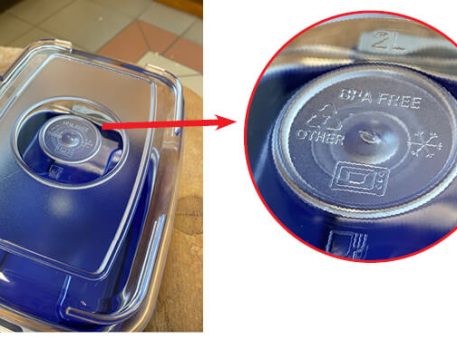Not All Plastic Is Bad
Do you also have doubts about the suitability of using plastic for food storage because you heard somewhere that plastic can contain the harmful substance BPA? Are you buying food storage containers but you’re not sure which ones to choose because there are various materials and price ranges available?
In the article, we summarize the definition of bisphenol A (BPA) and the research results on this compound conducted by the U.S. Food and Drug Administration (FDA) and the European Food Safety Authority (EFSA). We conclude the article with Status’s principles for the production of food storage containers.
Bisphenol A: What is it? Why is it used in water bottles and cans?
Bisphenol A is a component of polycarbonate (PC) plastic and epoxy resin. It provides strength to the plastic, while the epoxy resin is used as an inner coating for cans and tins to prevent rusting. Experts have found that over time (especially with exposure to higher temperatures and degradation), BPA leaches out of the packaging and enters the food we consume.
Did you know that many everyday products contain BPA? Besides water bottles, plastic plates, and cups, it is also found in eyeglass lenses, CDs, thermal paper, and even dental fillings. BPA can enter the body through the skin and inhalation as well.
The (non)harmfulness of BPA?
The initial studies on Bisphenol A in the 1990s showed its impact on brain function, hormonal disruptions, increased anxiety, hyperactivity, and other disorders. In reality, BPA has become so widespread in the modern world that most people have it in their bodies. The most concerning situation is believed to be among infants and children. Consequently, in the EU, the use of BPA in the production of baby bottles and as a coating in packaging for baby food was initially banned in 2011. As a result, a negative perception of BPA has become prevalent in society. Over time, most manufacturers of plastic packaging and food storage containers (including Status) have transitioned to BPA-free materials.
In more detailed studies in subsequent years, it was found that the impact of BPA is not as harmful as initially portrayed, as most research was conducted on rodents and in vitro models. The amounts of BPA to which the test animals were exposed were 1000 times or higher than the amounts humans are exposed to through food. It was also revealed that through oral ingestion (unlike injection), the metabolism converts BPA into an inactive form, making it undetectable in the offspring of rodents after 8 hours. It has also been shown that primates (including humans) of all ages process and eliminate BPA from their bodies much more effectively.

Even leading global organizations claim that BPA is not harmful
The U.S. Food and Drug Administration (FDA) and the European Food Safety Authority (EFSA) maintain the position that there is no evidence of harm from BPA to humans. Due to the sensitivity of the topic, research in this field is still ongoing.
Status’s plastic products are BPA-free and completely safe for food storage. We are a company committed to addressing consumer concerns, so we quickly responded to speculations about the harmfulness of BPA and changed the material used for our containers in 2015. We transitioned from polycarbonate to Tritan, supplied by the globally renowned company Eastman from the United States. Now, all our food storage products are free of BPA, BPS, and phthalates. We conduct business transparently, always stating the materials used in our products on our website and in the product descriptions and instructions for use.

Why do Status vacuum containers have the number 7 label?
If you have ever delved into the study of plastic and BPA, you may have come across special markings on plastic products that indicate the material they are made of. The numbers 1 to 7 inside a triangle of arrows represent different types of plastic and enable consumers to quickly recognize their quality. Number 1 represents PETE (Polyethylene Terephthalate), 2 represents HDPE (High-Density Polyethylene), 3 represents PVC (Polyvinyl Chloride), 4 represents LDPE (Low-Density Polyethylene), 5 represents PP (Polypropylene), 6 represents PS (Polystyrene), and 7 represents other plastic materials that do not fall into any of the aforementioned categories.
Polycarbonate with BPA is also classified under number 7, which has given this category a negative connotation. In reality, the number 7 indicates “Other” materials that are composed of various combinations of materials and do not belong to any of the other categories. Therefore, Status containers made of high-quality Eastman Tritan material are labeled with the number 7, which certainly does not imply lower-quality plastic, as some less informed individuals might assume.
We are interested in your opinion. Are you attentive to the quality of the materials you use for food preparation and storage? Do you check the category to which the material used in food containers belongs before making a purchase?
Access to the mentioned research:
U.S. Food and Drug Administration (FDA): Bisphenol A (BPA): Use in Food Contact Application
U.S. Food and Drug Administration (FDA): Questions & Answers on Bisphenol A (BPA) Use in Food Contact Applications
European Food Safety Authority (EFSA): Scientific Opinion on the risks to public health related to the presence of bisphenol A (BPA) in foodstuffs


